Key takeaways
- Adversaries continue to abuse and increase reach through malvertising such as Google Ads by impersonating legitimate software
- Elastic Security Labs is shedding light on an undiscovered hVNC malware that has been quietly collecting a large install base
- This malware we are calling LOBSHOT appears to be leveraged for financial purposes employing banking trojan and info-stealing capabilities
Preamble
Elastic Security Labs along with the research community noticed a large spike in the adoption of malvertising earlier this year. Attackers promoted their malware using an elaborate scheme of fake websites through Google Ads and embedding backdoors in what appears to users as legitimate installers. In this post, we will highlight one malware family we observed from this spike we’re calling LOBSHOT. LOBSHOT continues to collect victims while staying under the radar.
One of LOBSHOT’s core capabilities is around its hVNC (Hidden Virtual Network Computing) component. These kinds of modules allow for direct and unobserved access to the machine. This feature continues to be successful in bypassing fraud detection systems and is often baked into many popular families as plugins.
We will walk through the LOBSHOT infection chain and its behaviors. Additionally, we will provide a YARA signature and configuration extractor for this family.
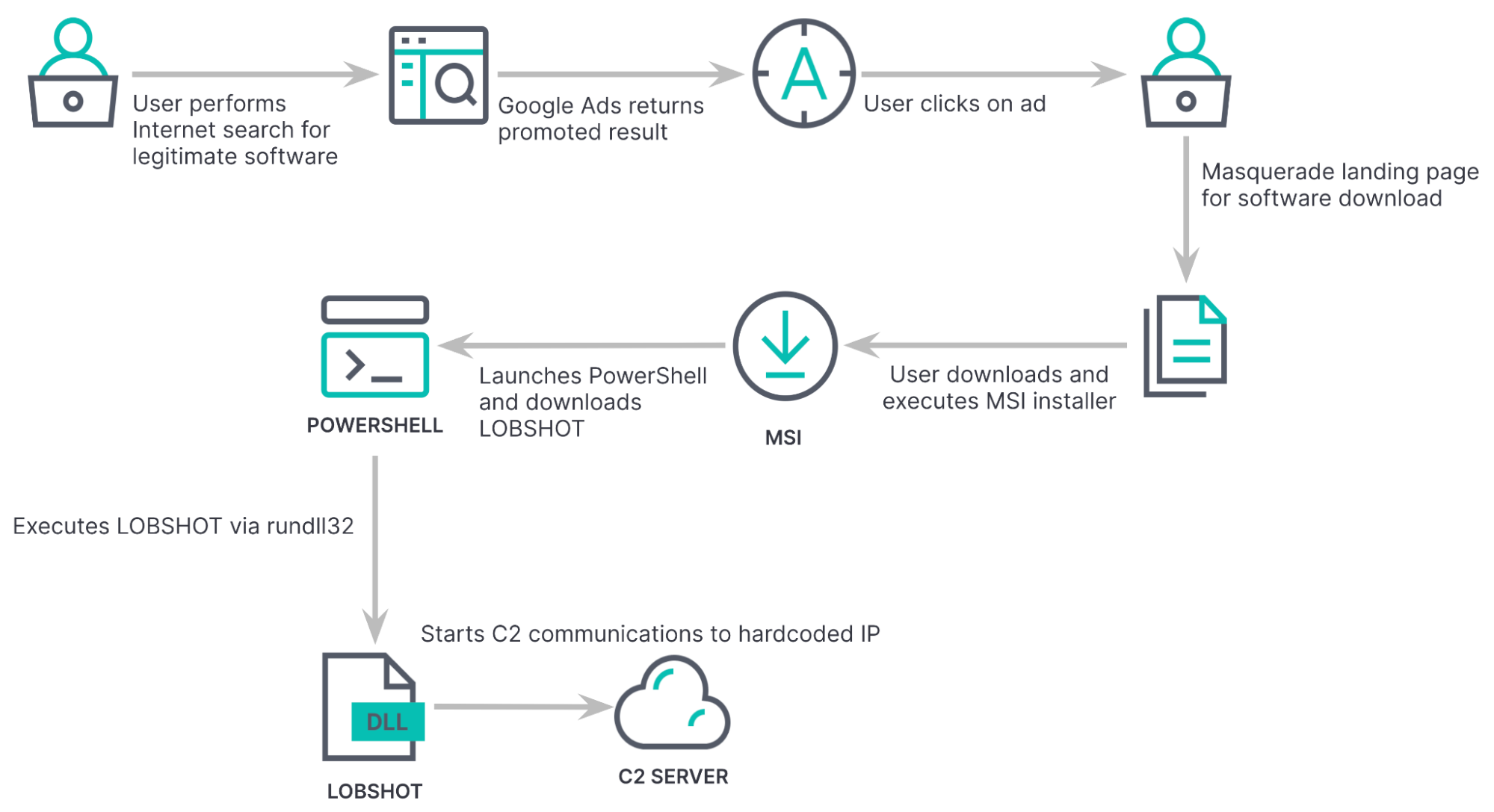
Throughout our analysis, we observed infrastructure known to belong to TA505. TA505 is a well-known cybercrime group associated with Dridex, Locky, and Necurs campaigns. A loader documented by Proofpoint, known as Get2, has also been tied to the same domains in the past that we observed with LOBSHOT. We assess with moderate confidence that LOBSHOT is a new malware capability leveraged by TA505 starting in 2022.
Campaign context
Earlier this year, Elastic Security Labs observed multiple infections with an interesting chain of events that resulted in the execution of an unknown hVNC malware, which we are calling LOBSHOT. Around this same time, similar infection chains were observed in the security community with commonalities of users searching for legitimate software downloads that ended up getting served illegitimate software from promoted ads from Google [1, 2, 3, 4].
In one example, the malicious ad was for a legitimate remote desktop solution, AnyDesk. Careful examination of the URL goes to https://www.amydecke[.]website instead of the legitimate AnyDesk URL, https://www.anydesk[.]com.

The landing pages were very convincing with similar branding as the legitimate software and included Download Now buttons that pointed to an MSI installer.
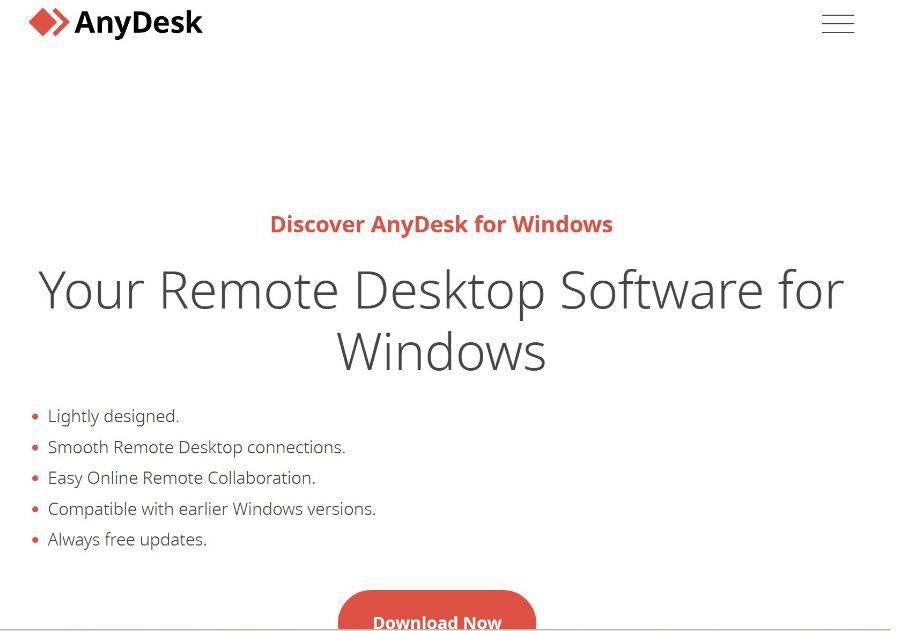
Thanks to security researcher Will Dormann, we were able to view the screenshots from the AnyDesk campaign.
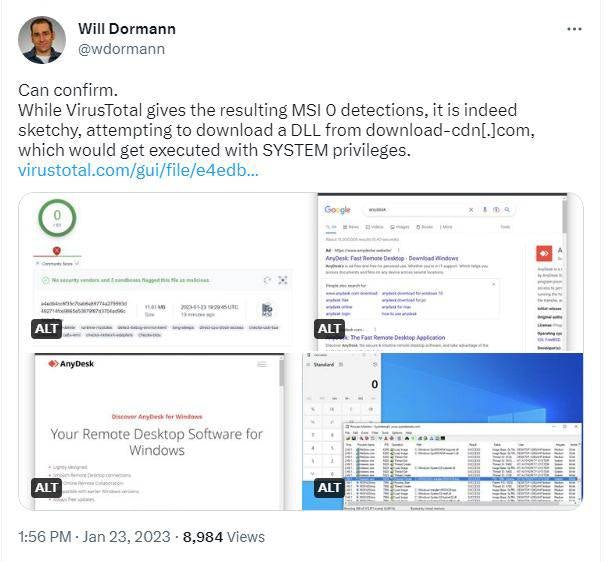
At the time of publication, we haven’t seen any previous public information about LOBSHOT, so we will focus our research on LOBSHOT’s functionality and capabilities.
LOBSHOT code analysis
To focus on the LOBSHOT malware, we will skip the initial infection chain. For these initial details, here is a good sandbox report to look over for general TTPs. We have observed over 500 unique LOBSHOT samples since last July. The samples we have observed are compiled as 32-bit DLLs or 32-bit executables typically ranging around 93 KB to 124 KB. Consider the following sample representative of LOBSHOT for purposes of this analysis.
Dynamic API resolution
In our LOBSHOT sample, like most malware we see today, it employs dynamic import resolution to evade security products and slow down the rapid identification of its capabilities. This process involves resolving the names of the Windows APIs that the malware needs at runtime as opposed to placing the imports into the program ahead of time.
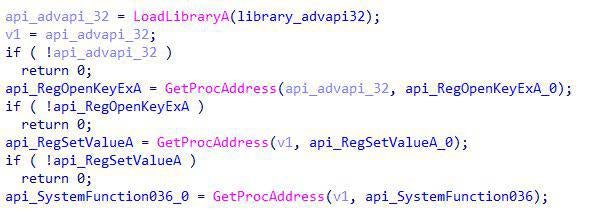
Defender emulation check
After the initial libraries are loaded, LOBSHOT performs a Windows Defender anti-emulation check by verifying if the computer name matches the string HAL9TH and if the username matches JohnDoe. These are hard-coded values within the emulation layer of Defender, if they are present, the malware immediately stops running. This kind of verification has been incorporated in many other stealers including Arkei, Vidar, and Oski. Below is the emulation output using the Qiling framework highlighting these verification checks.

String obfuscation
This malware hides its primary strings through a straightforward encryption function using different bitwise operators. To perform the string decryption, LOBSHOT uses an initial seed from the WTS_SESSION_INFO structure from a call to WTSEnumerateSessionsA.

In this case, the malware developer sets up the initial seed by performing an XOR on the SessionID (always a 0 ) and the S char from “Services”.

Initial enumeration
Before sending any outbound network requests, LOBSHOT builds a custom structure containing enumerated data from the machine including:
- GUID of machine derived from SOFTWAREMicrosoftCryptographyMachineGuid
- Windows edition, username, computer name
- A VM check, number of processes running, process ID, parent process of malware
- Windows desktop object details
- Screen height/width
- Display device information
- Handles to the desktop objects and windows
- DPI for the display(s)
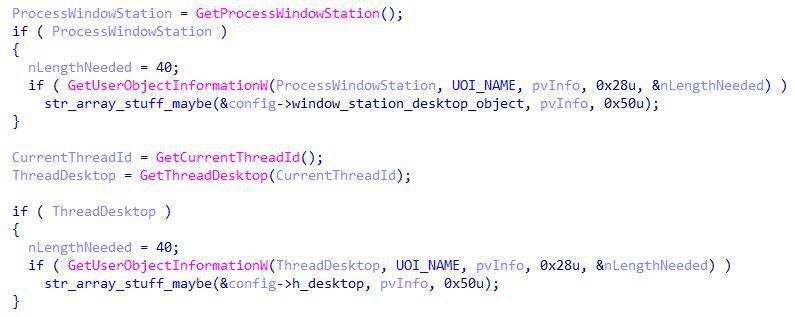
Execution flow
After LOBSHOT is executed, it moves a copy of itself to the C:ProgramData folder, spawning a new process using explorer.exe , terminating the original process, and finally deleting the original file. This design choice is used in an attempt to break the process tree ancestry; making it harder to spot for analysts.
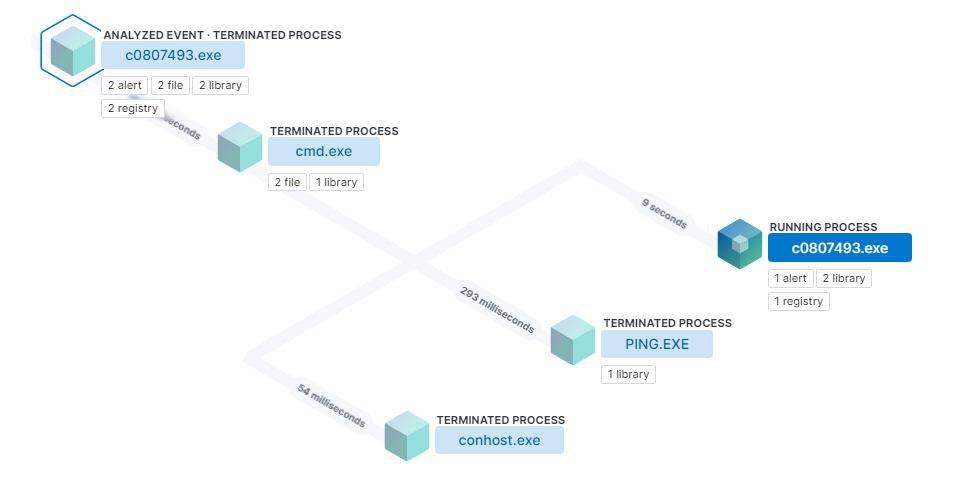
Below is a screenshot after the initial execution, the malware is now parentless and running from the C:ProgramData directory.
![]()
Persistence
For persistence, LOBSHOT leverages the Registry run key persistence method. In our sample, this is placed in the HKEY_CURRENT_USER Registry hive with a randomly generated name pointing to the malware located in C:ProgramData.

In addition, it sets Registry key data under the SoftwareMicrosoftWindows NTCurrentVersionDevices key path which is used to check for a hardcoded global identifier key that would indicate the system had already been infected. In our sample, the Display value is set to the string 134a1160. The results from the stealer feature are recorded inside the Default Printer value. We’ll discuss the stealer functionality in the next section.

Stealer functionality
With the persistence mechanism established, LOBSHOT starts a new thread kicking off the stealer functionality. It starts by targeting specific Google Chrome extensions that deal with cryptocurrency wallets. Below are Procmon outputs showing LOBSHOT trying to access 32 Chrome wallet extensions, nine Edge wallet extensions, and 11 Firefox wallet extensions.



For the complete listing of the different cryptocurrencies mapped to their extension IDs, see the appendix.
If there is a match with any of these extensions, the results are inserted in the SoftwareMicrosoftWindows NTCurrentVersionDevices Registry key value as binary data with the format of browser name_extension name. Below is an example after the registry modification showing: Chrome_Yoroi.
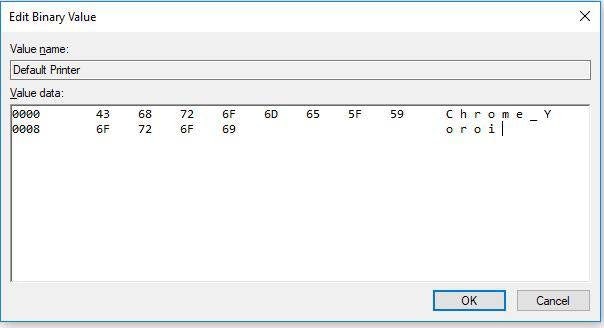
After the browser extensions are enumerated, there is a check for a hardcoded file titled hmr_*.dat inside the C:ProgramData directory. If this file exists it will be executed with rundll32.exe with the following command-line arguments:
rundll32.exe “C:ProgramDatahmr_1.dat”, #1 hmod
While we didn’t observe this behavior directly, this function appears to show off a feature baked in by the developer allowing the ability for additional execution options such as loading their own DLL.
Network communications
For each LOBSHOT sample we have reviewed, there is a hardcoded IP and port that is decrypted from the binary that is used as the primary C2. The malware beacons every 5 seconds communicating by using the following calls:
- ws2_32.socket
- ws2_32.connect
- ws2_32.send
- ws2_32.select
- ws2_32.recv
- ws2_32.shutdown
- ws2_32.closesocket
On these outbound requests, it sends pseudorandom hard-coded data along with a shortened GUID value and version number of the module.

Below is an example of the send request buffer sent during the initial outbound requests showing the above-hardcoded values and version number.

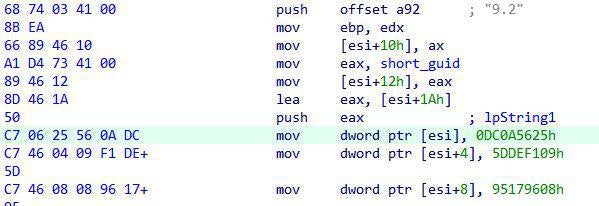
Searching for the above mov instruction paired with the first DWORD of the hardcoded value ( C7 06 25 56 0A DC ) shows over 550 samples in VirusTotal within the last year. With some of the first samples showing up in late July 2022. The prevalence of these hardcoded values shows that it has been actively used and under development for a long period of time, and will likely continue to be used in the future.

After this initial handshake, LOBSHOT will send the previous custom data structure containing the enumerated data such as the hostname, username, windows objects, etc. over this port.
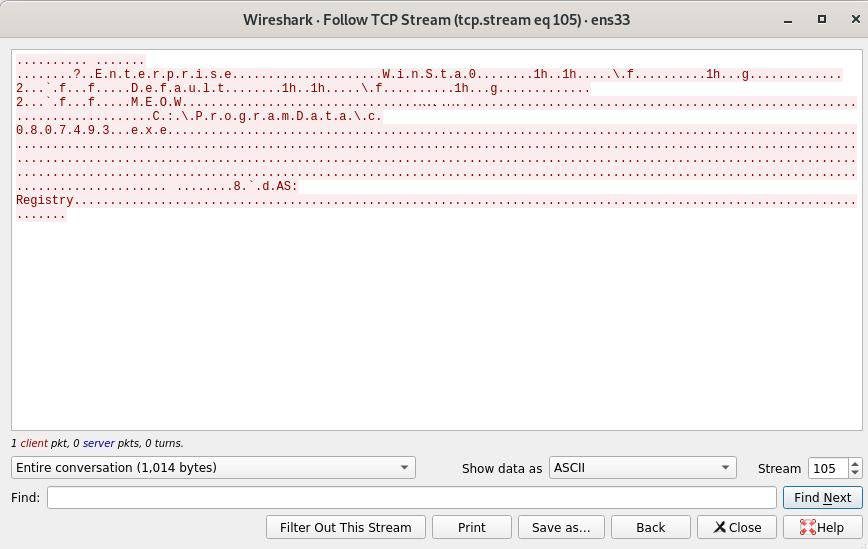
Capabilities
One of LOBSHOT’s core capabilities is around its hVNC (Hidden Virtual Network Computing) module.
Unlike traditional VNC (Virtual Network Computing) where the software provides remote access to a machine with the user’s consent and the visibility of the actions taken on the machine can be clearly observed. hVNC acts in the opposite way designed to stay stealthy where all actions by an attacker are taking place on the same machine, but can’t be visibly observed by the victim. hVNC became a popular solution within the banking trojan space to bypass device and fraud detection solutions. More details on hVNC can be found here.
LOBSHOT implements the hVNC feature by generating a hidden desktop using the CreateDesktopW Windows API and then assigning the desktop to the malware using the SetThreadDesktop API . A new Windows explorer.exe process is then created under the context of the new hidden desktop.
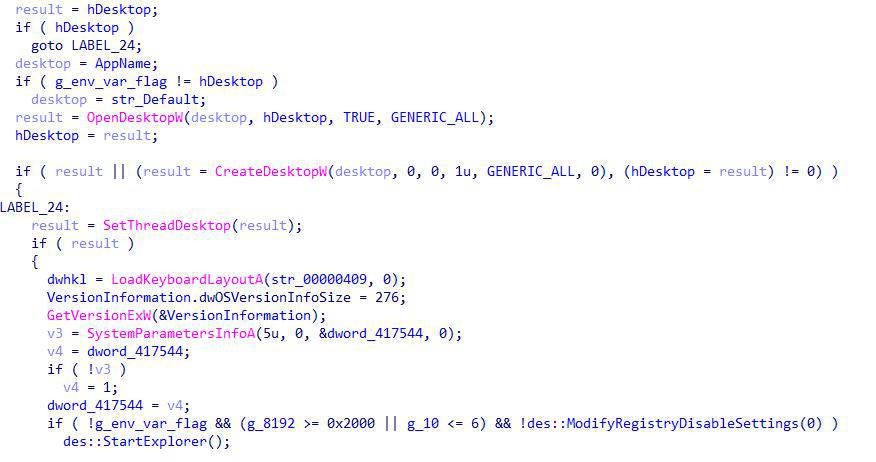
At this stage, the victim machine will start sending screen captures that represent the hidden desktop that is sent to a listening client controlled by the attacker. The attacker interacts with the client by controlling the keyboard, clicking buttons, and moving the mouse, these capabilities provide the attacker full remote control of the device.
Within LOBSHOT’s hVNC module, there is a built-in GUI menu that allows the attacker to run the following commands quickly:
- Start new explorer.exe process
- Start Windows Run command
- Start new Windows process with provided command
- Start Browsers (Internet Explorer, Edge, Firefox)
- Terminate existing explorer.exe processes and start new explorer.exe process
- Tamper with Windows sound settings
- Set/retrieve Clipboard text
- Activate Start Menu
- Modify DPI Awareness settings



While the main functionality is centered on LOBSHOT’s hVNC module, it does have additional capabilities. One example is its ability to swap out its C2 provided by an operator; it manages this by writing the new C2 details into the registry key path SoftwareMicrosoftWindows NTCurrentVersionDevices under the Video value.

LOBSHOT also includes an update mechanism where it will remove previous modifications to the registry such as removing the “Display” value and Run key persistence, starting a new process, and finally exiting the existing process.

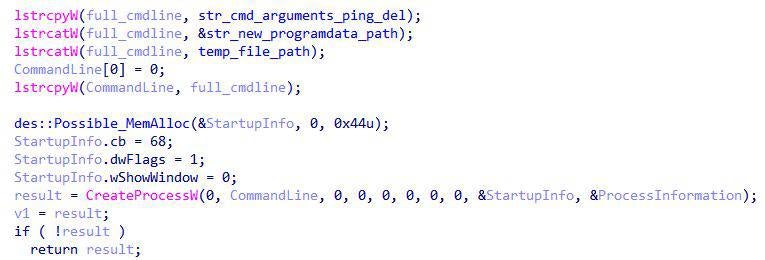
LOBSHOT configuration extractor
Elastic Security Labs has released an open source tool, under the Elastic 2.0 license, that will allow for configurations to be extracted from LOBSHOT samples. The tool can be downloaded here.
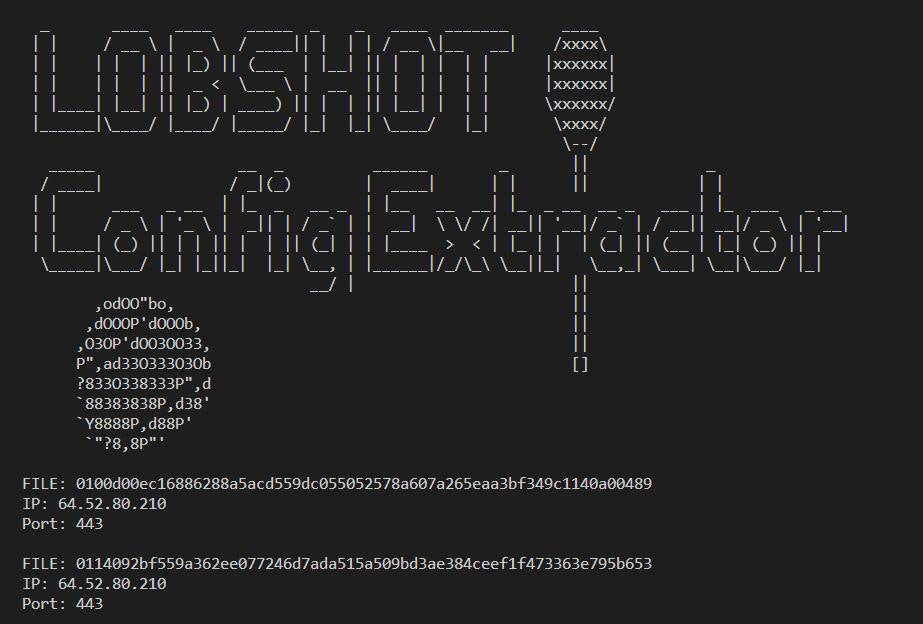
The extractor can run at the individual file or directory level, examples are below:
- python lobshot_config_extractor.py –file sample.bin
- python lobshot_config_extractor.py –directory samples
Summary
Threat groups are continuing to leverage malvertising techniques to masquerade legitimate software with backdoors like LOBSHOT. These kinds of malware seem small, but end up packing significant functionality which helps threat actors move quickly during the initial access stages with fully interactive remote control capabilities. We are continuing to see new samples related to this family each week, and expect it to be around for some time.
Detection logic
Prevention
Detection
EQL query
Using the Timeline section of the Security Solution in Kibana under the “Correlation” tab, you can use the below EQL queries to hunt for behaviors similar
The following EQL query can be used to detect suspicious grandparent, parent, child relationships observed with LOBSHOT.
sequence by host.id, user.id with maxspan=1m
[process where event.type == "start" and not startsWith~(process.executable, process.parent.executable)] by process.parent.name, process.entity_id
[file where event.type == "deletion"] by file.name, process.entity_id
[process where event.type == "start" and not startsWith~(process.executable, process.parent.executable)] by process.name, process.parent.entity_id
until [process where event.type == "end"] by process.name, process.entity_idYARA rule
rule Windows_Trojan_Lobshot {
meta:
author = "Elastic Security"
creation_date = "2023-04-18"
last_modified = "2023-04-18"
license = "Elastic License v2"
os = "Windows"
threat_name = "Windows.Trojan.Lobshot"
reference_sample = "e4ea88887753a936eaf3361dcc00380b88b0c210dcbde24f8f7ce27991856bf6"
strings:
$str0 = "HVNC Remote Control" ascii fullword
$str1 = " Error # %d - %08lx" ascii fullword
$str2 = "Set clipboard text failed." ascii fullword
$str3 = "OK %08lx %08lx %d" ascii fullword
$str4 = "") & (rundll32.exe "" wide fullword
$str5 = "%LOCALAPPDATA%svc.db" wide fullword
$str6 = "cmd.exe /c (ping -n 10 127.0.0.1) & (del /F /Q "" wide fullword
$seq_str_decrypt = { 8A 5A ?? 8D 52 ?? 80 EB ?? 85 FF 74 ?? C0 E0 ?? 2C ?? 0A C3 32 C1 32 C7 88 06 32 E8 83 C6 ?? 83 C5 ?? EB ?? }
$seq_emu_check = { 8B 35 ?? ?? ?? ?? 8D 44 24 ?? 50 8D 44 24 ?? C7 44 24 ?? 48 41 4C 39 50 C7 44 24 ?? 54 48 00 00 FF D6 }
$seq_enum_xor = { FF 15 ?? ?? ?? ?? 84 C0 0F 84 ?? ?? ?? ?? 83 7C 24 ?? 00 0F 84 ?? ?? ?? ?? 8B 4C 24 ?? 68 07 80 00 00 8B 41 ?? 8A 00 32 01 A2 ?? ?? ?? ?? }
$seq_create_guid = { 8D 48 ?? 80 F9 ?? 77 ?? 2C ?? C1 E2 ?? 46 0F B6 C8 0B D1 83 FE ?? 7C ?? 5F 8B C2 5E C3 }
condition:
2 of ($seq*) or 5 of ($str*)
}Observed adversary tactics and techniques
Elastic uses the MITRE ATT&CK framework to document common tactics, techniques, and procedures that advanced persistent threats use against enterprise networks.
Tactics
Tactics represent the why of a technique or sub-technique. It is the adversary’s tactical goal: the reason for performing an action.
Techniques / Sub techniques
Techniques and Sub techniques represent how an adversary achieves a tactical goal by performing an action.
Observations
All observables are also available for download in both ECS and STIX format. Additionally, we have created a VirusTotal Collection with all indicators.
| Indicator | Type | Reference |
|---|---|---|
| 95.217.125.200 | IP Address | LOBSHOT C2 |
| e4ea88887753a936eaf3361dcc00380b88b0c210dcbde24f8f7ce27991856bf6 | SHA-256 | LOBSHOT |
References
The following were referenced throughout the above research:
Appendix
Chrome wallet extensions
| Wallet name | Extension ID |
|---|---|
| Yoroi | ffnbelfdoeiohenkjibnmadjiehjhajb |
| TronLink | ibnejdfjmmkpcnlpebklmnkoeoihofec |
| Nifty Wallet | jbdaocneiiinmjbjlgalhcelgbejmnid |
| MetaMask | nkbihfbeogaeaoehlefnkodbefgpgknn |
| Math Wallet | afbcbjpbpfadlkmhmclhkeeodmamcflc |
| Coinbase Wallet | hnfanknocfeofbddgcijnmhnfnkdnaad |
| Binance Wallet | fhbohimaelbohpjbbldcngcnapndodjp |
| Brave Wallet | odbfpeeihdkbihmopkbjmoonfanlbfcl |
| Guarda | hpglfhgfnhbgpjdenjgmdgoeiappafln |
| Equal Wallet | blnieiiffboillknjnepogjhkgnoapac |
| Jaxx Liberty | cjelfplplebdjjenllpjcblmjkfcffne |
| BitApp Wallet | fihkakfobkmkjojpchpfgcmhfjnmnfpi |
| iWallet | kncchdigobghenbbaddojjnnaogfppfj |
| Wombat | amkmjjmmflddogmhpjloimipbofnfjih |
| Oxygen | fhilaheimglignddkjgofkcbgekhenbh |
| MyEtherWallet | nlbmnnijcnlegkjjpcfjclmcfggfefdm |
| GuildWallet | nanjmdknhkinifnkgdcggcfnhdaammmj |
| Saturn Wallet | nkddgncdjgjfcddamfgcmfnlhccnimig |
| Ronin Wallet | fnjhmkhhmkbjkkabndcnnogagogbneec |
| Station Wallet | aiifbnbfobpmeekipheeijimdpnlpgpp |
| Harmony | fnnegphlobjdpkhecapkijjdkgcjhkib |
| Coin98 Wallet | aeachknmefphepccionboohckonoeemg |
| EVER Wallet | cgeeodpfagjceefieflmdfphplkenlfk |
| KardiaChain Wallet | pdadjkfkgcafgbceimcpbkalnfnepbnk |
| Phantom | bfnaelmomeimhlpmgjnjophhpkkoljpa |
| Pali Wallet | mgffkfbidihjpoaomajlbgchddlicgpn |
| BOLT X | aodkkagnadcbobfpggfnjeongemjbjca |
| Liquality Wallet | kpfopkelmapcoipemfendmdcghnegimn |
| XDEFI Wallet | hmeobnfnfcmdkdcmlblgagmfpfboieaf |
| Nami | lpfcbjknijpeeillifnkikgncikgfhdo |
| MultiversX DeFi Wallet | dngmlblcodfobpdpecaadgfbcggfjfnm |
Edge wallet extensions
| Wallet name | Extension ID |
|---|---|
| Yoroi | akoiaibnepcedcplijmiamnaigbepmcb |
| MetaMask | ejbalbakoplchlghecdalmeeeajnimhm |
| Math Wallet | dfeccadlilpndjjohbjdblepmjeahlmm |
| Ronin Wallet | kjmoohlgokccodicjjfebfomlbljgfhk |
| Station Wallet | ajkhoeiiokighlmdnlakpjfoobnjinie |
| BDLT Wallet | fplfipmamcjaknpgnipjeaeeidnjooao |
| Glow | niihfokdlimbddhfmngnplgfcgpmlido |
| OneKey | obffkkagpmohennipjokmpllocnlndac |
| MetaWallet | kfocnlddfahihoalinnfbnfmopjokmhl |
Firefox wallet extensions
| Wallet name | Extension ID |
|---|---|
| Yoroi | {530f7c6c-6077-4703-8f71-cb368c663e35}.xpi |
| Ronin Wallet | ronin-wallet@axieinfinity.com.xpi |
| MetaMask | webextension@metamask.io.xpi |
| TronLink | {5799d9b6-8343-4c26-9ab6-5d2ad39884ce}.xpi |
| {aa812bee-9e92-48ba-9570-5faf0cfe2578}.xpi | |
| {59ea5f29-6ea9-40b5-83cd-937249b001e1}.xpi | |
| {d8ddfc2a-97d9-4c60-8b53-5edd299b6674}.xpi | |
| Phantom | {7c42eea1-b3e4-4be4-a56f-82a5852b12dc}.xpi |
| {b3e96b5f-b5bf-8b48-846b-52f430365e80}.xpi | |
| {eb1fb57b-ca3d-4624-a841-728fdb28455f}.xpi | |
| {76596e30-ecdb-477a-91fd-c08f2018df1a}.xpi |
Source: https://www.elastic.co/security-labs/elastic-security-labs-discovers-lobshot-malware
Views: 0